#Christian appropriation of pagan symbols
Explore tagged Tumblr posts
Text
Actual workplace conversation:
Catholic Workplace Acquaintance: Why would any non-Catholics celebrate Christmas?! It's the celebration of Jesus' birth!"
[Being who I am, I regarded this as a sincere question and attempted to answer it. The protestants present listened with curiosity, so I kept going]
Me: Well, first, Christmas wasn't always about Jesus. Solstice, Yule, and Saturnalia all pre-date the celebration of Jesus' birth as a winter holiday. Festivals in the West developed to take place in the darkest, coldest part of winter, using community to ward off the physical and emotional cold.
When Catholics conquered places in the West, they'd take a sacred building and slap a cross on it, saying "There! Now it's a cathedral!"
They did the same thing with western winter festivals. They appropriated them and said they were now about Jesus' birthday. December 25th was the date of the winter solstice in the Roman calendar.
Not even Catholic scholars claim Jesus was born on December 25th.
This was just a way to appropriate a local pagan holiday for Catholic purposes.
Catholic Workplace Acquaintance: But NOW it's about Jesus' birthday! Why would non-Catholics celebrate it?
Me: Okay, first we'll set aside the millions of Christians who are not Catholic, including Orthodox Christians, Anglicans, and a wide variety of protestants, and save for later that you're casually invalidating their faith because it's not your approved flavor of Christianity:
About 70% of Americans call themselves Christians and only about 20% of those are Catholics. I get that your world is Catholic. But the greater world is about 70% non-Christian and Catholics make up only about half of the world's Christians. But let's set aside your view that non-Catholic Christians aren't real Christians for later because I think what you really want to know is why people who do not worship Jesus as a god would celebrate Christmas.
[At this point, the protestants present were sort of enjoying this]
For a lot of Christians, sure, the winter holiday season is presently about celebrating the birth of Jesus. For others, it has remained/reverted more like a Solstice or Yule celebration. At a time of the year which is cold and dark, they come together with family and friends to create their own warmth and light. Family, friends, food, music, merriment, gift-giving, charity, generousity...none of these things require a metaphysical position or a belief in the divinity of Jesus or the day on which no Christian scholar believes Jesus was born.
Catholic Workplace Acquaintance: But...it's ABOUT Jesus' birth...
Me: For many throughout the world, it just isn't. Jesus wasn't born in December, Jesus factually isn't the "reason for the season" and never was except when Catholics appropriated the holidays of others- so celebrating the holiday as something other than a celebration of Jesus' birth shouldn't bother even the most devout Catholic...who can continue to celebrate their savior's birth as best suits them and their family as their traditions, beliefs, and and preferences dictate.
Christians who make the complaint that Christmas requires Christ are simply noticing that the holiday their ancestors appropriated is continually being taken back. They don't have to like it, but complaining about how others celebrate or claiming that Catholics should have a lock on it because they stole it fair and square seems parochial, tribalistic, ahistoric, and silly.
[Now the protestants in the room were chuckling, but my Catholic Workplace Acquaintance seemed to take great offense]
Catholic Workplace Acquaintance: All I hear is a sound like the teacher on Peanuts. BWAH-BWAH-BWAHA-MWAHA."
[...and she started to flounce away]
Me: ...Wow. Okay...well...Merry Christmas. And that's from a Jewish atheist.
https://en.wikipedia.org/wiki/Yule
https://en.wikipedia.org/wiki/Saturnalia
#War on Christmas#Christmas#Catholics#Protestants#Pagans#Western religion#Christian appropriation of pagan symbols#Yule#Saturnalia#History of Christmas#Christian History#winter solstice
2 notes
·
View notes
Note
How is the cult from Midsommer white supremacist? Because they are swedish and borrow from paganism? The nazis appropriated Norse culture, they even misused different runes and symbols, and Scandinavia is one of the most tolerant regions in Europe.
There's Nazi imagery throughout the film, & the fact that all the poc die first is no mistake. Ari Aster himself has said that the Harga are White Supremacists:
Defying an outdated horror trope, Aster does not kill off Josh (William Jackson Harper) — the only black character for miles — first. As Aster points out, though, the Hårga are racist, a callback to “a part of Swedish history and European history,” and all of the “outsiders” or “new blood” recruited for mating are purposely white.
“He’s thrown away in a way that the other members of the main cast are not," Aster notes. “And that is because these people have no further use for him.”
The Harga, when not inbreeding with each other, go out and groom new members to either 1. Be sacrified or 2. Introduce new genes by manipulating people into the cult or drugging & raping them (what they did to Dani & Christian), & they ONLY pick white people for this. There are no nonwhite Harga & that's not an accident.
The script also makes it crystal clear that the nonwhite couple were specifically chosen (bc they are not white) & brought there to be sacrificed & were never going to live. The member that brought the nonwhite couple displays hatred & malice towards them when they're not looking, but doesn't do this with the other white outsiders

(Ingemar is the Harga that brought Connie & Simon, the nonwhite couple). Connie & Simon didn't do anything wrong, they didn't do anything outright to insult the Harga. The only thing they did was be shocked about seeing the ritual suicide & express desire to leave (and they weren't the only ones who did this, Dani also did). And yet they were some of the first to die.
Even the visuals-- the Harga wear all White, it's always in blinding daylight. Whiteness is a GLARING theme. There's also foreshadowing early on in the film, where a book titled "The secret Nazi language of the Uthark" featured in Christian's room just before they go to Sweden.
There's also other Nazi ideology present within the Harga, such as the strict gender roles (the women all wear dresses & cook & clean & care for the children together but the men butcher the bear together), eugenics & ableism (the elderly are killed off at a certain age because they see disability & needing to be cared for as an elder "shameful", which is what one Harga states at the ritual suicide scene, & of course killing off the nonwhite characters), the "return to tradition" ideology (there are NO modern technology in the community, & it's in the countryside).
You see a cult full of ONLY White people, using Norse paganism (something VERY popular with Nazis) in an isolated area, who routinely murder poc, don't intermix with poc, kill off their elderly, Dani (the blonde, light eyed white girl) is praised for her beauty & made their May queen by the Harga, with strict gender roles, & this film was made by a JEWISH MAN to show the Harga as the bad guys, & you don't have a hunch that the Harga are maybe supposed to be white supremacists/nazis? That doesn't raise any red flags for you?
& let's not forget how Scandanavia committed genocide against the Saami, the Indigenous population who were there for hundreds of years before anyone else. That's a little off topic, but as a First Nations Canadian I aint gunna let that just go unacknowledged. Scandanavia has a white supremacy problem too, & Ari Aster is right for pointing it out
#I've talked to other poc about this film & me & other ppl snuffed out that this movie would be about a nazi cult just from the trailer#nazi tw#being Scandanavian & being into paganism doesn't make you a white supremacist no.#but the film makes it obvious through the other clues that that's not what's going on here#anonymous#rape mention#cult tw#nazism tw
2K notes
·
View notes
Text
get ready for all the smug posts about how secular Christmas symbols like reindeer and mistletoe have NOTHING to do with the birth of Christ and are pagan traditions STOLEN and APPROPRIATED by Christians
587 notes
·
View notes
Text
One of the things I hear a lot from Gentile witches and neo-pagans who want to work with Lilith or claim to work with Lilith, is that she is actually a Mesopotamian goddess, usually either Ishtar/Inanna or Erishkigal, and that it was the Jews, with their horrible patriarchy juice, who slandered her and cast her down, and so the Jews do not deserve to say what happens to her and it isn't antisemitism to work with her, or to completely ignore what the Jews say about what she is in a Jewish context.
Lilith is not Ishtar or Erishkigal. However, there is a Mesopotamian figure that is pretty stinking analogous to Lilith, and is probably her folkloric ancestor, by which I mean the idea of Lilith probably comes from this Mesopotamian figure. In fact, Lilith almost certainly is either a Jewish version of this figure, or, they are both descended from the same Near Eastern and Mediterranean basin folkloric figure. That figure is Lamashtu.
Lamashtu is, much like Lilith, the supernatural embodiment of maternal and infant mortality, a figure of power and terror, who functions as a way to embody and cope with the profound dangers that are pregnancy, childbirth, and infancy without effective medical care. the Mesopotamians never worshiped Lamashtu, but they did seek to appease her, including making symbolic gifts to her, to keep her from visiting them, and killing them or their children.
An interesting side note is that there is also a Mesopotamian figure who specifically opposes Lamashtu and functions as the protector of pregnant women and infants, and that figure is Pazuzu, a wind spirit, who ruled over other wind spirits, including ones called the Iilu in the Akkadian language. Akkadian is a Semitic language, related to Hebrew, and this word is probably a cognate of Lilith, but the Iilu probably have no relationship to the figure of Lilith except her name. You might know Pazuzu as the demon featured in the movie, The Exorcist, and ironic fate for a mythological protector of women and children.
Anyway, if you'll remember, I implied above that the Lamashtu/Lilith figure, was present in various guises throughout the Mediterranean basin and the Near East, so there are of course figures analogous to both of them throughout the region, such as Lamia of Greece, and the Strix of Rome.
So if you really really want to work with a figure who functions as the supernatural embodiment of maternal and infant mortality, Lamashtu, Lamia, or the strix would all be excellent options that don't come from an extant closed religious practice. All the baby killing, none of the antisemitism and cultural appropriation.
While all three figures are almost certainly descended from the same folkloric root, they're all subtly different, because as stories and characters travel, they change. as such, they all have particular good points about them as figures of veneration.
Lanashtu is the OG bad bitch, who commanded fear, respect, and offerings, like a mythological mafiosa, collecting protection money.
Lamia has attached to her the story that she was one of Zeus's dubiously willing lovers, who was screwed over first by Zeus, the embodiment of patriarchical rule, then by a jealous Hera, the embodiment of patriarchal marriage, so if what attracted you to Lilith was the story from the Alphabet of Ben Sira, about a victim of the patriarchy getting her own back through violent vengeance, Lamia might be the girl for you. With her however, the emphasis is less on her murder of children, then on her seducing and eating men, though she does also get strongly associated with killing children, especially boys.
And the strix is particularly interesting, because the word comes down to us in the modern Italian word for witch, striga. Indeed, one of the theories as to where the witch figure came from in Early Medieval, and then Early Modern Christianity, was as the strix demon made human. This might explain the close association between Early Modern Witchcraft and infant mortality, including Italian stories of witches causing infants to die seemingly natural deaths, so that they could dig them up and eat them after their funerals, something that ties these human supposed witches very closely to demonic folkloric antecedents. If you are looking for a figure of unfairly maligned female power, the strix and her close association with later human witches, might be the one for you.
All three of these figures, much like Lilith herself, are reflections, both of the power women wielded even within patriarchal societies, over the process of pregnancy, birth, and childrearing, and also the powers of death and loss that everyone was subject to. There is something powerful, transgressive, and even healthy in acknowledging the fears and dangers presented by this death and loss,and for some people, that might take the form in venerating the underlying powers. If this is something that would be spiritually meaning for you, and you wish to work with such a figure, and you are not Jewish, please respect the fact that Lilith is part of a closed religious practice, and remember that Lilith has sisters, in other parts of the Mediterranean basin and the Near East, who are not from extant closed cultures, and who might serve your needs better anyway.
728 notes
·
View notes
Note
How do you feel about jewish supernatural creatures being portrayed in media? Is it okay if done correctly, since it is a closed religion? I'm really curious, especially since you obviously know so much about them.
I also want to say that I love your art! And I love being able to learn more about these creatures.
thank you for the kind words, i appreciate it!
i have to say i'm confused by the question, or possibly its framing - i'm not sure what Judaism being a "closed religion" has to do with portraying creatures from folklore in media. "closed religion" is a term people generally seem to use when they're talking about not appropriating the actual religious/cultural practices of a (usually contextually marginalized) religion that you don't belong to. recently i've seen some pushback against the term "closed practice/religion" for Judaism, as it's not literally true. yes, Judaism is for Jews, but anyone can convert to Judaism - it's just that it's a whole process that involves a lot of learning & then being accepted by a Jewish community. to my knowledge, "closed practice" as a term grew out of the pagan/neo-pagan community anyway & was used to describe any religion whose symbols, deities & practices weren't socially considered fair game for use in your own personal spiritual practice - i have a lot of thoughts on this odd sort of "restaurant view" of religion & culture, where some things are at a free-for-all buffet so you can just take what you want (who put them there?) while other things are only served at certain tables by reservation (is anyone else ever invited?), but that's a whole other post.
i'm assuming you're asking how i feel about non-Jewish people portraying creatures from Jewish folklore in various kinds of media, & the answer is that it totally depends on the thing & how it's done? i definitely don't subscribe to the idea that creators should never step outside their own experience/culture. i do think portraying (elements of) other cultures is something that should be done carefully & sensitively, ideally with input from members of that culture! unfortunately, it is very, very easy for creators to unintentionally fall into antisemitic tropes & stereotypes, because those ideas are so old & so pervasive, especially when it comes to monsters & other supernatural creatures (Jews having been literally demonized by Christian culture for centuries). i think if you're not Jewish, then making sensitive, educated work about Jewish monsters is probably hard mode, but that isn't to say it can't be done. i can think of plenty of bad examples off the top of my head, but i'm sure i could come up with some good ones too if given the time.
of course, this is all just my opinion, & should not be taken as a ruling on what's "okay"! other Jews will agree & disagree with me, which is fine & good. :)
249 notes
·
View notes
Text
Info For Beginner Witches!
This is basically a masterpost for content relevant to new witches. A lot of it of it's stuff I wrote but I'll also link to material written by other people if I think it's useful.
Practice & Technique
Magical Correspondences 101
Closet Witchcraft: How To Get Witchy When You Can't Come Out Of The Broom Closet
How To Practice: Divination With Dice!
An approach to deity/entity work for the sort of people this sort of thing would work for
Manifestation Without Woo (a compassionate psychological approach to manifestation)
Non-Competitive Affirmations
No, you can't tell anything about a person from their natal chart.
A Brief Introduction to Energy Work
Energy Work On The Body: Hittin' The Right Spots For Tension Relief
Research & Critical Thinking
Information Literacy Basics
How to research
Distinguishing Fact, Opinion, Belief, and Prejudice
Critical Thinking: Definition, Examples, & Skills
Caution & Critical Thinking In Divination
10 Questions To Distinguish Real From Fake Science
Search for information on any witchy topic here!
"A weird thing just happened, does this mean anything? Is it an omen?"
Practicing discernment: Some ways of testing and ruling out the mundane
Research Tip: Remember the Five W's!
How conspiracy peddlers and cult recruiters make you feel like you're "thinking for yourself" when you're actually not
Remember a Previous Life? Maybe You Have a Bad Memory
Why fighting pseudohistory matters
Scams, Hoaxes, Conspiracy Theories, & Cults Everyone Should Know About
On people who assert "things are done this way for a reason!"
Dogmatism is not the solution to cultural appropriation
Some beliefs you might have to deconstruct as an ex-Christian
Avoiding Harmful Stuff & Staying Safe
Recognizing the difference between real history and pseudohistory
Is the spiritual person a conspiracy theorist? A list of red flags
List of red flags to watch out for when joining a coven or online group
Beware of charisma mirrors
When your right to say no is entirely hypothetical
Dog whistles and symbols to watch out for
Eugenicist and bioessentialist beliefs about magic
What is spiritual eugenics?
Toxic Individualism In Modern Witchcraft
New Age beliefs that derive from racist pseudoscience
The Ancient Astronaut Hypothesis is Racist and Harmful
Allyship does not mean seeing yourself as worthless
The rules about responding to call outs aren’t working
History
Debunking the Pervasive Myths About Medieval Witch Hunts
Debunking Myths About Easter/Ostara
Just How Pagan is Christmas, Really?
The Origins of the Christmas Tree
No, Santa Claus Is Not Inspired By Odin
Why Prehistoric Matriarchy Wasn’t a Thing (A Brief Explanation)
Why Did The Patriarchal Greeks And Romans Worship Such Powerful Goddesses?
No, Athena Didn't Turn Medusa Into A Monster To Protect Her
Who Was the First God?
Were Ancient Civilizations Conservative Or Liberal?
PODCAST RECS - Debunking and Fact-Checking for Witches & Witchcraft Spaces
Angela's Symposium (YouTube channel about modern esotericism and witchcraft by Dr. Angela Puca)
ESOTERICA (YouTube channel about the history of Western esotericism by Dr. Justin Sledge)
ReligionForBreakfast (YouTube channel about religion run by Dr. Andrew Henry)
Let's Talk Religion (YouTube channel run by Filip Holm, lots of Islamic content but also lots of other stuff)
OceanKeltoi (Norse Heathenry)
Jackson Crawford (Norse Heathenry)
Conservation & Ecology
The Migratory Bird Treaty Act, Explained (all USian witches should read this, it most likely affects you)
How the Rage for Sage Threatens Native American Traditions and Recipes
(This post is unrebloggable because I plan to use it as a reference post to link, and may add/remove things to it over time.)
120 notes
·
View notes
Text

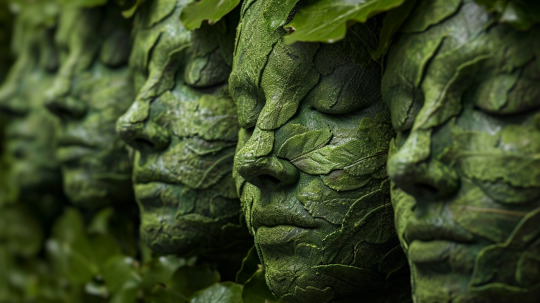
The Green Man: A Celtic Folklore Symbol of Renewal and Growth
Significance of the Green Man The Green Man has been depicted in art and literature for centuries, and his significance has evolved over time. In some cultures, the Green Man is associated with fertility and the renewal of life. In others, he is seen as a symbol of rebirth and resurrection.
In pagan cultures, the Green Man is often associated with the summer solstice (also referred to as Litha), a time when the days are longest and the sun is at its strongest. In this context, the Green Man represents the power of the sun and the renewal of life that comes with it.
In Christian cultures, the Green Man is often associated with Easter, a time when Christians celebrate the resurrection of Christ. In this context, the Green Man represents the renewal of life that comes with Christ's resurrection.
In modern times, the Green Man has become a symbol of environmentalism and the need to protect the natural world. Many people see the Green Man as a reminder that we are connected to nature and that we have a responsibility to care for the planet.
The Green Man Crystal and Herb Correspondences Colours and crystals associated with the Green Man may vary depending on the individual or the tradition, as there is no one set of established correspondences that is universally recognized. However, here are some common associations:
Colours: - Green: As the name suggests, the Green Man is most commonly associated with the colour green, which represents nature, growth, and vitality.
- Brown: The colour brown is also associated with the Green Man, as it represents the earth and the stability of the natural world.
Crystals: - Emerald: The emerald is a green gemstone that is associated with nature, growth, and abundance, making it a fitting crystal for the Green Man.
- Moss Agate: Moss agate is a green stone with moss-like inclusions, which can be seen as a symbol of the Green Man's connection to nature.
- Green Aventurine: Green aventurine is a crystal that is said to promote growth and vitality, making it a fitting stone for the Green Man.
Other crystals that are associated with nature and the earth, such as jade, malachite, and green tourmaline, may also be appropriate for use in Green Man rituals or meditations. Ultimately, the most important thing is to choose crystals and colours that resonate with you personally and feel appropriate for your connection to the Green Man and the natural world.
Herbs: Herbs associated with the Green Man may also vary depending on the individual or the tradition, but here are some common associations:
- Oak: The oak tree is often associated with the Green Man, as it is a symbol of strength, stability, and endurance. Oak leaves or bark may be used in Green Man rituals or as an offering to the deity.
- Ivy: Ivy is a climbing plant that is often associated with the Green Man, as it represents the wild, untamed side of nature. Ivy may be used in wreaths or other decorations for Green Man celebrations.
- Hawthorn: The hawthorn tree is associated with fertility, growth, and protection, making it a fitting plant for Green Man rituals. Hawthorn may be used in the form of leaves, flowers, or berries.
- Nettle: Nettle is a plant that is associated with strength and resilience, and is said to be particularly potent when gathered on the eve of May Day. Nettle may be used in teas or as an ingredient in Green Man incense blends.
- Elder: The elder tree is associated with protection and healing, and is said to be a sacred tree in Celtic mythology. Elderflowers or berries may be used in Green Man rituals or as offerings to the deity.
Other herbs that may be associated with the Green Man include rosemary, thyme, and lavender, all of which are associated with nature, growth, and healing.
62 notes
·
View notes
Text
Also if you wanna talk about the Catholic Church’s appropriation of other religions’ symbols and structures in the name of Converting the Pagans, and subsequent religious syncretism and survivance of Indigenous pre-Christian celebrations, religious logics, and worship modes… then the entire history of Mexico post-Spanish Invasion is not only incredibly interesting but MUCH better documented than any eighth-century Euro pagan narrative.
#But that would require respecting Indigenous people#And that’s not actually what most people who are into Ostara are here for
40 notes
·
View notes
Text

Today's topic is relatively serious, witches! Let's unravel the enchanting tapestry of Wicca, witchcraft, and paganism, shall we? While these terms are often used interchangeably, they each have their own unique traditions, beliefs, and practices. Here's a glimpse into their similarities and differences:
Wicca: Wicca is a modern pagan religion that was developed in the mid-20th century by figures such as Gerald Gardner and Doreen Valiente. It is centered around the worship of nature and the reverence of the divine, often symbolized by a god and goddess representing the masculine and feminine energies of the universe. Wiccans celebrate seasonal festivals, known as Sabbats, and honor the cycles of the moon in their rituals. Wicca emphasizes personal responsibility, ethical behavior, and the practice of magic as a tool for spiritual growth and transformation.
Witchcraft: Witchcraft, on the other hand, is a practice rather than a religion. It encompasses a wide range of magical traditions, beliefs, and practices that are rooted in ancient folk magic, shamanism, and occultism. Witches may or may not adhere to a specific religious belief system, and their practices can vary greatly depending on individual preferences and cultural influences. Witchcraft is often associated with spellcasting, herbalism, divination, and connecting with the energies of the natural world.
Paganism: Paganism is a broad umbrella term that encompasses a diverse array of spiritual traditions and practices that are rooted in pre-Christian, indigenous, or nature-based religions. Paganism honors the sacredness of the earth and the divine energies that permeate all living things. It includes traditions such as Druidry, Heathenry, Hellenism, and various forms of polytheism, animism, and pantheism. Pagans celebrate seasonal festivals, honor ancestral spirits, and cultivate a deep connection with the natural world.
While Wicca, witchcraft, and paganism share some common themes, such as reverence for nature and the practice of magic, they are distinct paths with their own beliefs, practices, and communities. Some practitioners may identify with one or more of these paths, while others may follow their own unique spiritual journey. Whatever path you choose, embrace the magic within you and follow your intuition as you explore the mysteries of the universe. 🌙✨

In the realm of spiritual practices and religions, some traditions are considered "closed," meaning they are intended for specific cultural or ethnic groups and are not open to outsiders or those who do not belong to those groups. The reasons for a tradition being closed vary and can include cultural preservation, respect for ancestral traditions, and the protection of sacred knowledge. Here are some examples of closed practices or religions and why they are considered as such:
Native American Spirituality: Many Indigenous tribes and nations have spiritual practices that are considered closed to outsiders. These traditions are deeply rooted in specific cultural contexts and are passed down through generations within tribal communities. Outsiders are often discouraged from appropriating or practicing these traditions out of respect for Indigenous sovereignty and the protection of sacred ceremonies and knowledge.
Vodou (Voodoo): Vodou is a syncretic religion that originated in Haiti and West Africa, blending elements of African spiritual traditions with Catholicism. It is considered a closed religion because it is deeply intertwined with Haitian culture and history and is traditionally practiced within specific communities. Outsiders are generally not encouraged to practice Vodou without proper initiation and training, as it involves working with powerful spirits and deities.
Shinto: Shinto is the indigenous religion of Japan and is deeply rooted in Japanese culture and history. It involves the worship of kami (spirits or deities) and the practice of rituals at shrines and sacred sites. While Shinto is open to participation by anyone, certain aspects of Shinto practice, such as the inner workings of Shinto priesthood and some shrine rituals, are considered closed to outsiders.
Certain forms of Witchcraft: Some forms of witchcraft, particularly those rooted in specific cultural traditions or lineages, may be considered closed practices. For example, some forms of African diasporic witchcraft, such as Hoodoo and Santeria, are traditionally practiced within specific cultural communities and are not open to outsiders without proper training and initiation.
It's important to approach spiritual practices with respect, humility, and sensitivity to cultural and historical contexts. While it's natural to be curious about different traditions, it's essential to recognize and honor the boundaries of closed practices and to seek guidance and permission from practitioners within those traditions before engaging with them.

In closed practices, certain aspects are not open for use or appropriation by individuals who do not belong to the specific cultural or ethnic groups associated with those practices. These aspects often include:
Sacred Rituals and Ceremonies: Closed practices typically involve sacred rituals, ceremonies, and rites that are deeply rooted in specific cultural or ancestral traditions. These rituals may involve working with powerful spirits, deities, or ancestors and are considered sacred and highly respected within the community. Outsiders are generally not permitted to participate in or appropriate these rituals without proper initiation and training.
Traditional Knowledge and Wisdom: Closed practices often involve the transmission of traditional knowledge, wisdom, and teachings that are passed down through generations within cultural communities. This knowledge may include spiritual beliefs, practices, herbal remedies, and magical techniques that are specific to the cultural context and are not meant to be shared with outsiders without permission.
Sacred Objects and Symbols: Certain sacred objects, symbols, and artifacts are considered sacred within closed practices and are used in rituals and ceremonies as vessels for spiritual energy or as tools for communication with spiritual forces. These objects may include ritual implements, sacred plants, and religious symbols that hold deep significance within the cultural context. Outsiders are generally not permitted to use or appropriate these objects without proper understanding and respect for their meaning and purpose.
Initiation and Training: In many closed practices, initiation into the tradition and proper training are essential prerequisites for engaging in spiritual practices and rituals. Initiation ceremonies often involve a formal process of acceptance into the community and may include teachings, rituals, and oaths of allegiance. Proper training under the guidance of experienced practitioners is necessary to ensure the safe and respectful practice of closed traditions.
Cultural Appropriation: Outsiders are cautioned against appropriating elements of closed practices without proper understanding, respect, and authorization from the cultural community. Cultural appropriation involves the unauthorized use, adoption, or exploitation of cultural elements by individuals who do not belong to that culture, often resulting in the distortion, commodification, or trivialization of sacred traditions and practices.
It's important to approach closed practices with humility, respect, and a willingness to learn from and honor the cultural context from which they arise. Seek guidance from experienced practitioners within the community and always ask permission before engaging with sacred rituals, objects, or knowledge.
I really recommend doing your own research of what is and isn't sacred or closed practices for the sake of your own reputation as well as for the sake of yourself. There are many good collections of information available. This website provides alternatives as well. This website also highlights the new interests in witchcraft recently and notes the closed and sacred practices and why.
#magickkate#reference#witchblr#witches#kitchen witch#sigils#witch#witchcraft#queue the magick#green witch#witchy#beginner witch#college witch#baby witch tips#baby witch#cottage witch#quarantine witch#college witch tips#witch aesthetic#witchcraft 101#witchcraft community#witch community#witches of tumblr#witch tips#witchtok#witchy vibes#witchy shit#witchyvibes
36 notes
·
View notes
Text
Valhalla is not heaven, and other reasons fascists are dumb dumbs.
The utterly, bewildering, so funny it's depressing thing about neo n@z1s and blanc enthusiasts being so fucking quick to appropriate Norse iconography as a symbol of their "proud heritage" is that they consistently demonstrate a grasp on Norse Mythology as deep as the Marvel Cinematic Universe does. Not a dig on the MCU, but, let's just say creative liberties is an understatement when it comes to representing Norse Mythology.
The primary point of interest boils down basically to the concept of the "exhalted warrior death." As fascism is the ideology of hero worship, on a surface level, this makes sense. Old Norse Culture was one largely defined by conflict and vikinging as a trade.
Many Norse beliefs are shaped by, designed to inspire and exhalt the warrior who fights without fear. Their society in part relied on "the hero warrior."
Couple things though:
1. Not all Norsemen were vikings, and you REALLY aren't one.
You think the Norse belief system was so heavily lazer focused on a single profession in what needed to be an entire functioning community everyone that wasn't a viking was poopooed to damnation and/or a dishonorable life? No bitch. "Hel" in Norse mythology is just where the dead ARE. It's a very morally neutral place to be. Hel be vibin'. Odin, Freya, and possibly Njord were collecting souls for a very specific reason. That being . . .
2. The souls of warriors were being brought to Valhalla (among other places) to train for a final battle THEY WERE DESTINED TO LOSE.
Y'all fucking forgot about Ragnorok didn't you? The souls in Valhalla are being conscripted to a suicide mission. It's a place of honor to be chosen, but it's not a reward.
The training is apparently honestly a bitch in a half in it of itself supposedly. I guess you get god mead, though. Sit next to Odin at the big boy table, maybe. An afterlife of pain and awaiting doom for beer and for daddy to notice you.
That's the thing, though. Valhalla isn't supposed to be Heaven. It aligns with many other Norse Myths in that it exhalts to bravery in the face of certain annihilation. Valhalla as a function of beleif designed to psychologically break past the human instinct to prioritize self-preservation. The quality in which it exhalts is not the hero's death, but embracing doom. THAT'S WHY Odin chose warriors who died WITH WEAPON IN HAND, as in, they already faced one destruction, they can face another.
The army of Valhalla weren't even the only deaths of honor Odin recognized one could achieve. The Volva were all very much in Hel once they died, and they are all distinguished as Odin's special little future-seeing squad in the mythos too. And that's JUST Odin, ignoring the other gods who chose souls for their armies.
Norse mythology, ironically to the point of head-exploading farce, spits in the face of the concept of the Hero's Death as defined by fascism. "Dying for the cause" is a Christian/Abrahamic value that they are retroactively interjecting into Norse belief because historical self-insert fanfiction that is the Arian Mythos. There's no fucking point in training and fighting in Ragnorok, everyone is destined to fail, everyone knows it, and that's the fucking point.
The concept of Ragnorok and Valhalla was not even universal among the Norsemen. The inevitability of death and rebirth is just kind of a given as a natural truth in most pagan beliefs. Everyone you know and love is going to die, and then something else will come from the ashes. Literally "chill bro it be like that sometimes."
And if that's not enough to convince you fascists don't actually know shit about Norse mythology, I can tell you all about how fucking gay it is.
#norse magic#norse loki#norseman#norse deities#norse polytheism#gay pagan#paganism#eclectic pagan#pagans of tumblr#politics#fuck facists#facism#anti facist#norse folklore#norse mythology#odin allfather#odin deity#odin#fields of valhalla#witchythings#witchlife#pagan witch#traditional wicca#wicca#loki god of mischief#vikings#paganlife#baby pagan#pagan wicca#wicca altar
177 notes
·
View notes
Text
So how did we get from this
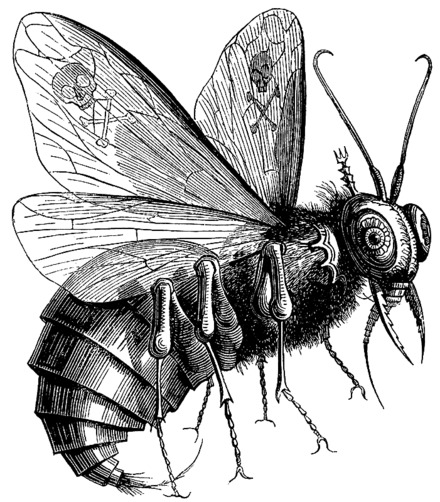
To this?

Let's talk about the history of Beelzebub!
Beelzebub is strongly associated and indeed often conflated with Baal, a Hellenistic era pagan god worshipped everywhere from the Canaanite city of Ekron to Greece (where he was known as Belus) to Egypt as far back as 1400 BCE. He is first mentioned in the Books of Kings (2 Kings 1:2–3, 6, 16) as Ba'al-zəbûb, meaning "Lord of the Flies" in Hebrew, a possible corruption of "Lord of the High Place" meant to denigrate the deity after he was appropriated and repurposed as a false god, then a demon. Baal worship was extremely difficult for the early Christians to stamp out, so they basically stole other people's mythology and used it as a free idea bucket to fill out the Bible's rogues gallery.
While it's true that in some Ugaritic texts, Baal is depicted as expelling flies and causing sickness, he was still held in high esteem in ancient Canaan and Phoenicia as a powerful deity who controlled the sun, storms, and fertility and who defeated Mot, the god of death and the underworld. The ancient world could get pretty scatological at times! After all, one of Beelzebub's contemporaries, the Egyptian sun god Ra, was often depicted as a dung beetle, then a prominent symbol of rebirth.
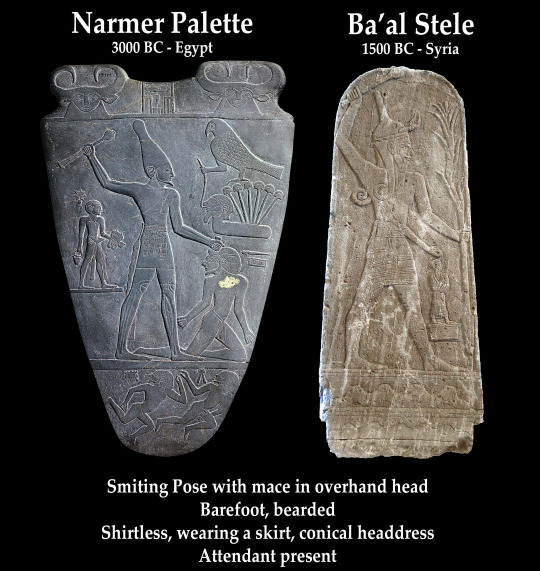
Some scholars think he might have even been the same god! Beelzebub seems to have been the ancient world's go-to demon because the name has been used interchangeably with everyone from Lucifer, Satan, and even Hades in some gnostic texts.
Unfortunately, we don't have much information about Beelzebub's pre-Christian origins other than some iron age ruins in what is now modern day Israel that suggest his temples were decorated with little golden flies, which is pretty neat.
Interestingly, Jesus himself was accused of being a worshipper of Beelzebub multiple times in the New Testament. Maybe the Pharisees were projecting?
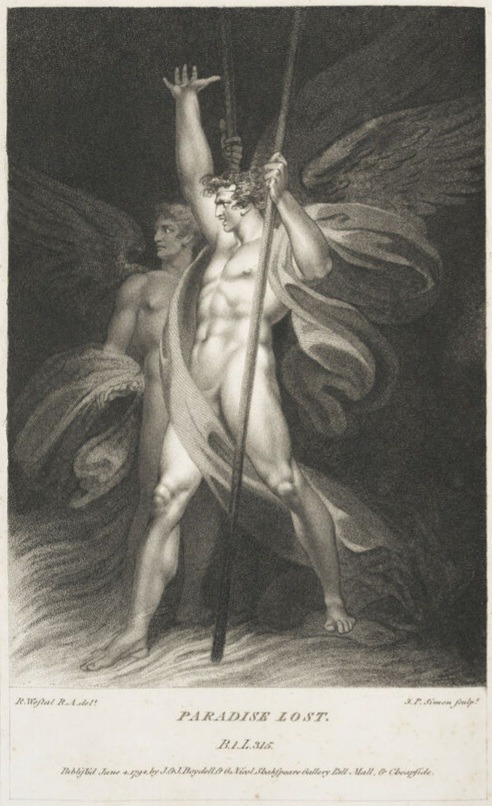
Throughout the Middle Ages, Beelzebub reappeared again in the Lantern of the Light (where he was associated with the sin of envy), De Occulta Philosophia, Princes of Hell, and other demonology texts. 16th-17th Century French Inquisitor Sébastien Michaelis elevated him to the rank of fallen angel in his book The Admirable History of Possession and Conversion of a Penitent Woman: Seduced by a Magician that Made Her to Become a Witch, translated to English in 1613. It was around this time Beelzebub started to become strongly associated with witchcraft. Michaelis should know; he burnt over 14 women accused of being witches!
Unsurprisingly, his name came up repeatedly during the Salem witch trials.
Beelzebub and fellow demons new and old bounced all over different classifications of demons during the 1500s and 1600s. In John Milton's epic poem Paradise Lost, first published in 1667, Beelzebub was part of an unholy trinity consisting of him, Lucifer, and Astaroth. Occultist Johan Weyer decreed that Beelzebub was the Emperor of Hell, having led a successful revolt against the devil. German theologian Peter Binsfield described him as the Prince of Gluttony in his 1589 Treatise on Confessions by Evildoers and Witches. Before that, he was associated with Envy, then Pride.
We even have his personal signature! (At least according to the Grand Grimoir, an anonymous text on black magic of unknown origin)

Beelzebub's physical appearance is even more diverse. He's been depicted as everything from a leopard, a feminine man as tall as a tower, a snake, a calf with a fly's face to...whatever the literal hell this is:
"'dressed like a bee and with two dreadful ears and his hair painted in all colors with a dragon's tail"

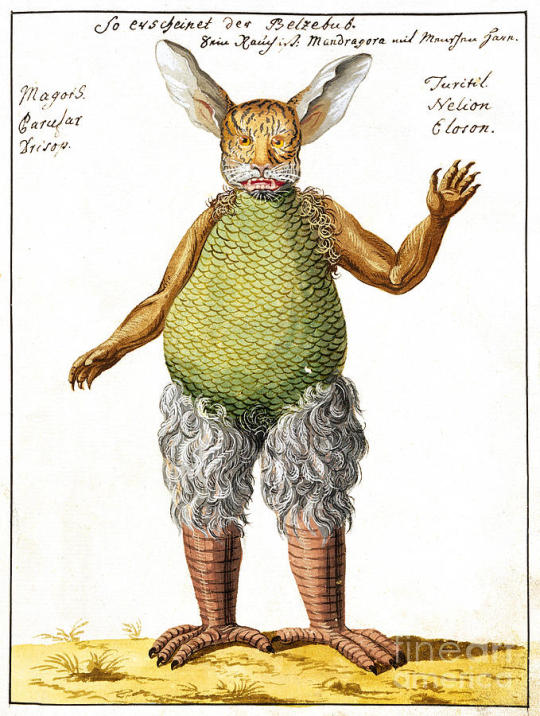
Jacques Albin Simon Collin de Plancy (1793 – 1881)'s Dictionnaire infernal was among the first to depict Beelzebub literally as a fly. No duck feet, no lion's mane. Just a fly.

Still better than this.
As Plancy was a skeptic influenced by Voltaire, the book was first intended as a folklore compilation but was later modified to fit with Roman Catholic theology after he converted, much to the consternation of his admirers. Many of his lurid illustrations later appeared in S. L. MacGregor Mathers's edition of The Lesser Key of Solomon...for better or for worse.

Put Adrammelech in Helluva Boss you cowards.
So basically, Beelzebub has been a public domain character since before King Tut was laid in his golden sarcophagus, and people have been just making shit up about him for millennia. What's your favorite depictation of Beelzebub? This is mine:
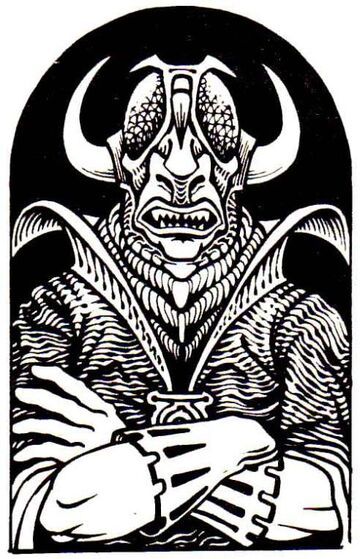
Nothing beats 2nd Edition Dungeons & Dragons artwork.
#helluva boss#queen bee#beelzebub#character design#meta#demonology#history#mythology#long post#vivziepop#dandelion watches hellaverse#religion
42 notes
·
View notes
Text

Sun cross, also called solar cross, sun wheel, is one of oldest symbols, dating back to prehistoric cultures. It has been found around the world and holds different interpretations to various cultures. It is believed to be one of oldest religious symbol in world, with links to Indian, Asian, American and European religious art from prehistoric ages.
The symbol, and its many variations, have been found around the world. Carvings from the Bronze Age show the solar cross depicted on burial urns, dating back to 1440 BC. It makes appearances on ancient cave walls, in places of worship, on coins, artwork, sculptures and in architecture.
Most basic form of sun cross features an equilateral cross set within a circle. This variation is known as Odin’s cross in Norse culture. It represented Odin, the most powerful of Nordic gods. Interestingly, English word cross is derived from Norse word for this symbol – kros.
Celtic pagan god of thunder, Taranis, was often depicted with a spoked wheel in his hand, often associated with the solar cross. This wheel has been found on Celtic coins and jewelry. The Celtic cross is believed to be a variation of the wheel of Taranis, with the circle in its center believed to represent the sun.
Swastika is a variation of the solar cross, featuring bent arms in a turning motion. This symbol was considered a good luck charm and used around the globe by many cultures, including the Native Americans, until Hitler appropriated it and altered its positive symbolism forever.
It’s a symbol of sun, an object that has been worshipped since ancient times. Belief was that symbol represented chariot wheel of Sun god. Ancient kings in Egypt and elsewhere used this symbol as they saw it as representing highest power – sun. It represents wheel, which gave power, strength and mobility to people and society. In modern astronomy, the solar cross is used as the symbol for the Earth, rather than the sun.
In Christianity, sun cross represents a halo, which is associated with angels and saints. Christians also consider it a symbol of the power of God. --Archaeo - Histories
@ archeohistories

15 notes
·
View notes
Text
Christian's can be so predatory...
My sister is raising my niece pagan, she has told her school this, and even linked some BBC resources about it. She doesn't mind her learning about Christianity, but she doesn't want it to be forced on her. My niece is not the only none Christian in the class either. So honestly this should be respected.
Last night my niece came home with some heavily pagan appropriated Christian stickers (these pissed me off actually), a very Christian bag to put her Easter eggs in, and a cross. The school had let the local church in to do this...
My sister told her we don't believe in Jesus, and told her that she wasn't going to keep the cross. My niece was yelling about how it was a gift from Jesus, and really started to go on about Jesus. In a way that somebody had obviously really pushed on her the way she was talking about it.
We're both furious about this. Like absolutely livid.
I had to promise my niece I'd get her a better bag for her Easter eggs. Since the other was actually just brown paper with Christian symbols on. Like seriously WTF, like I'm not putting across well how they have obviously pushed it on her, because she honestly was like Jesus gave me these and he was great...
Me and my sister growing up in some of the situations we did, really hate shit like this. Which BTW, this is the church that physically locked me and my sister in, and tried to make a bunch of us answer questions about Christianity, and angry parents had to come and rescue us and the other children... We have beef.
#christians#ex christian#Christian#religious#religion#Pagan#pagan community#paganblr#Easter#Ostara#Rant
86 notes
·
View notes
Text
Let's Talk About Religious Appropriation and Christianity

In my previous post, I talked about why religious appropriation matters and why it genuinely impacts pagan communities when culturally Christian authors take our gods out of context. Now I wanna talk about why it doesn't go the other way.
Religious appropriation is when someone from a dominant religious group misuses symbols or practices from a marginalized religion. (Reminder: marginalized means an identity or group is treated as insignificant or pushed to the periphery.) There is an element of power imbalance to appropriation.
In the United States, where I live, Christianity is the dominant religious group. Even Americans who are not practicing Christians themselves are culturally Christian -- they were raised in a culture where Christianity is assumed to be the default. In other parts of the world, the dominant religion may be another faith like Buddhism, Islam, or something else. I will be talking about Christianity in this post because that's my experience, but just remember that this isn't about theology so much as social influence.
Someone living in a culturally Christian society might use Christian symbols or elements in their art for a lot of different reasons. It might be a sincere expression of faith because the artist is a Christian (see: C.S. Lewis). The artist might use Christian symbols because they are widely known and will be easily recognized by their audience (see: It's a Wonderful Life). The artist might use Christian symbols outside of their original context or in a subversion of that context to create comedy (see: Dogma by Kevin Smith) or horror (see: Rosemary's Baby). And finally, they might use those symbols as a critique or satire of organized Christianity (see: Children of the Corn).
In any of those cases, it's highly unlikely that the depiction in this media property is going to overshadow actual Christian practices. Christianity is one of the most widely practiced religions in the world. There are over 2 billion Christians globally. 63% of Americans identify as Christians. (And that number is at an all time low! In older generations, it's higher!) And because of the built-in hierarchy of Christianity, there are designated spokespeople who can speak up to set the record straight.
For a real life example of this, let's think about The Da Vinci Code. For those who don't know, The Da Vinci Code is a thriller novel written by Dan Brown. A major plot point in the story is the reveal that Jesus Christ had sex and fathered children with Mary Magdalene, which is considered a heresy by most Christians. The Catholic Church specifically had a huge negative reaction to Dan Brown writing about them spending 2,000+ years intentionally covering up the fact that Jesus fucked.
And The Da Vinci Code had a HUGE impact on pop culture. The book has sold over 80 million copies in 44 languages. The movie stars huge actors like Tom Hanks and Sir Ian McKellan and was the second-highest grossing film of 2006. The massive protests drew even more media attention. This story was a very big deal for a couple of years.
And yet, most people in America and other culturally Christian countries still know that, in Christian lore, Jesus died without marrying or fathering children. Even people who have read The Da Vinci Code or seen the movie can usually recognize that the whole Mary Magdalene thing is fiction. Even if someone did come away thinking Jesus getting it on with Mary Magdalene was historical fact, they're likely to encounter other media at some point that will depict Jesus as unmarried.
More people do not believe Jesus fucked because of The Da Vinci Code. It has not significantly changed popular perceptions of Christianity, or even of Catholicism. This is because Christianity, and specifically the Catholic Church, are huge institutions with both the power and the platform to set the record straight.
Marginalized religions do not have that kind of power or platform, which is why religious appropriation is a much bigger deal for us. In general, you can't appropriate something from a dominant cultural group.
#long post#religious appropriation#cultural appropriation#christianity#culturally christian#media studies#media analysis#the da vinci code#pop culture paganism#witchblr#paganblr
22 notes
·
View notes
Note
You made a comment on Feb 12 in regard to a goy being an ass and said the nazis were pagans. Which surprised me because I know theres a neo-pagan movement today and such but overall could you elaborate?
In order for Nazism to gain traction, Hitler, and Himmler specifically, needed a faith system in order to unite the German people. They took elements of historic Nordic and Germanic pagan belief and archaeology- Nazi archaeology relied on trying to convince the world that there was an indeed an ancient race of Aryans and that Germans were their descendents. They appropriated Nordic and Slavic sites, claiming they were in fact Germanic, and sometimes even faked discoveries.
Himmler especially wanted to impose his idea of "true Germanic paganism" onto the German people in order to distance themselves from Christianity and create more of a "unique" identity that seperated Germans from other Europeans, to unite them under a shared Volk identity. He also was obsessed with religious relics that he claimed were of German origin, or could at least give legitimacy to the Nazis by being symbols of power. One of the things he tried to popularize was the concept of Thingspiel, which he claimed was based on ancient Germanic pagan celebrations. The Nazis built amphitheatres on sites they claimed were the ancient sites of Germanic pagan gathering sites, although some sites were pure fabrications.
Most Nazi symbols are taken from Nordic runes or, in the case of a swastika, from symbols they found in archaeological sites that they believed was proof of a universal Aryan race. In reality, swastikas were just a simple symbol to draw and often depicted a star or the sun in archaeological finds. There's been swastikas found in archaelogical sites around the world. Neo-Nazis today rely on their idea of Germanic paganism, and the modern Norse pagan community is unfortunately rife with Nazis.
Further reading:
Producing the Volk community – the Thingspiel movement 1933–36
'Arierdämmerung': Race and Archaeology in Nazi Germany
The Past as Propaganda: Totalitarian Archaeology in Nazi Germany
Hitler’s Monsters: The Occult Roots of Nazism and the Emergence of the Nazi ‘Supernatural Imaginary’
LUCIFER’S COURT: Ario-Germanic Paganism, Indo-Aryan Spirituality, and the Nazi Search for Alternative Religions
ASATRU FOLK ASSEMBLY
The Man Who Brought the Swastika to Germany, and How the Nazis Stole It
A LOOK AT RACIST SKINHEAD SYMBOLS AND TATTOOS
Runic Writing (racist)
Cultural Appropriation in Contemporary Neopaganism and Witchcraft
#antisemitism#racism#white supremacy#history#nazis#heinrich himmler#pagan antisemitism#pagan racism#nazi symbols#nazi ideology#neo nazis
147 notes
·
View notes
Text
Samhain Traditions
Toward the end of October the leaves change, the air crisps, and the world seems to take on an eerie, magical glow. Samhain is celebrated on October 31st, and it’s a time to remember the dead and to celebrate the coming of the new year. It is the third and final harvest festival.
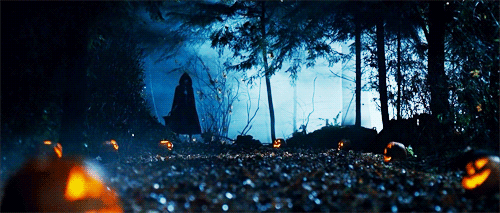
Samhain (pronounced "sow-in") is believed to have its roots in Celtic Ireland, Scotland, and Wales. The Celts, an ancient people who lived in these regions more than 2,000 years ago, celebrated Samhain as a significant holiday. It marked the end of the harvest season and the beginning of the darker half of the year.
Samhain was celebrated from the evening of October 31st to November 1st, coinciding with the end of the Celtic calendar year. This was a time when the veil between the physical and spiritual worlds was thought to be at its thinnest. To honor this unique period, the Celts engaged in a festival of fire. Bonfires were lit to symbolize the sun's waning power, ward off malevolent spirits, and guide the souls of the departed to the Otherworld. People would wear disguises, often made from animal skins, to ward off vengeful spirits and trickster fairies.
One of the most important aspects of Samhain was paying tribute to deceased family members and ancestors. Celts believed that during Samhain, the spirits of the dead could return to the earthly realm. Offerings of food and drink were left out for these spirits, and places were set at the dinner table to welcome them. It was a time for remembering, celebrating, and seeking guidance from the other side.
When Christianity spread to the Celtic regions, it attempted to integrate the existing pagan traditions into the new faith. In the 9th century, the Catholic Church established All Saints' Day on November 1st, which was followed by All Souls' Day on November 2nd. These days incorporate elements of Samhain, such as the veneration of the dead. Over time, this blending of cultures resulted in the creation of All Hallows' Eve, which eventually became Halloween.
Fast forward to the present day, and Halloween has become known for its spooky decorations, costumes, trick-or-treating, and jack-o'-lanterns. It still retains many aspects of Samhain's spirit, emphasizing the thrill of the mysterious and the connection between the living and the dead.
Samhain, rooted in the cycles of nature and the mysteries of the afterlife, has stood the test of time, evolving and adapting across centuries and cultures. As we partake in the festivities of Halloween, we are, in a way, carrying forward the traditions and spirit of Samhain, honoring our ancestors and embracing the magic of this enchanting season.
There are many different ways to celebrate Samhain. Some people attend festivals, while others hold private rituals in their homes. Some common activities include:
Decorate the house and altar with the appropriate correspondents:
Colors: orange, black, purple, gold, silver, white
Symbols: pumpkins, acorns and nuts, fall leaves, apples, brooms, black candles, cauldrons, pomegranate, photos of ancestors and loved ones who have passed on
Animals: bats, cats (specifically black cats), owls, crows and ravens
Crystals: aquamarine, bloodstone, carnelian, jet, obsidian, onyx, smokey quartz
Herbs & Flowers: allspice, calendula, cosmos, chrysanthemum (mum), deadly nightshade, mandrake, mint, nutmeg, rosemary, sage, thistle, wormwood
We can also eat traditional foods like apple cider and roasted nuts. Some recipes to try include: Herb bread for abundance, Squash Soup for cleansing, Pumpkin Scones for Success, Apples Cider for Balance, Mushroom Pasta for Divination, Concannon for Wealth
Carving pumpkins is a wonderful combination of Samhain and Halloween. Jack O Lantern faces are meant to ward off bad spirits.
Observe the changes in nature. Take a nature walk or hike to connect with the changing season. Collect fallen leaves, acorns, or pinecones to use in decorations or rituals. Spend time in contemplation, feeling the energy of the earth as it prepares for winter's rest.
It’s a great time to perform closing rituals, or release rituals.
One of the central aspects of Samhain is honoring and connecting with our ancestors. Set up a special altar in your home with photographs, mementos, and offerings that represent our ancestors. Take a few moments to remember and connect with those who came before us. Honor the dead.
Samhain is an ideal time for divination and communication with the spirit realm. Tarot readings, scrying with a crystal ball or a dark mirror, or even a simple game of divination like apple bobbing can be great ways to connect with the mystical. Be open to symbols that pop up.
Samhain is a time to reflect on the past year and to look forward to the future. It is a time to connect with nature and with the spirit world. It is a time to celebrate life and death.
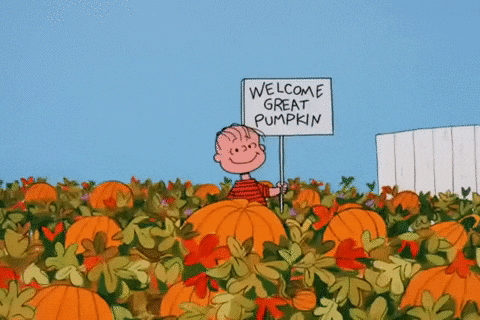
Journal Prompts and Reflections for Samhain:
What aspects of your life no longer serve you? What do you need to release or leave behind in order to move forward?
What were the highlights and challenges of the past year? What lessons have you learned? How have you grown and transformed?
What are your goals and intentions for the upcoming year? What steps can you take to bring your intentions to fruition?
Who are your ancestors, and what do you know about their lives?
15 notes
·
View notes